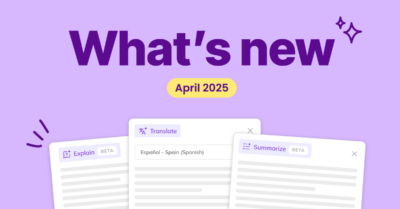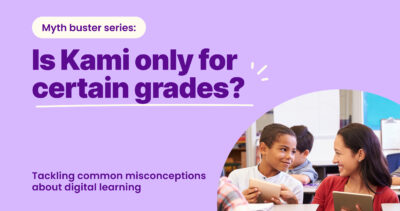Shirin Bradfield
Did you know that all those super-famous, super-popular Marvel movies that keep coming out are in fact, based on super-comics?
It’s true. Before Robert Downey Jr. ever suited up and tangled with Josh Brolin’s big purple bad guy, Thanos, Marvel and DC comics were creating epic characters and placing them in action-packed storylines since the 1930s!
Comic books rarely garner the same respect as literary classics or modern chapter books. Possibly the association between comic books and picture books made for young children prevents them from being taken seriously as pieces of significant literature. But comic books, graphic novels, manga, and other similar stories have not only endured for over a century, but their popularity continues to grow. This blog has a bit of background on the different kinds of comic books and offers some suggestions of which characters and storylines to introduce to your students for a book study that’s guaranteed to grab the attention of even the most reluctant readers.
Comic books explained
So what exactly is a comic book? Why are some of them called graphic novels? And why do all the kids in my class talk about manga all day?
A comic is a combination of illustrations and written words (usually expressed through dialogue) arranged into panels on a page. Some comics, such as the Far Side are only a single panel. Some comics, like Garfield, are a few panels arranged into a short storyline called a comic strip. A comic book is simply a longer series of panels. Back in the 1940s, when Batman and Wonder Woman made their first appearances, comic books were typically 60–90 pages long and had about 12 panels per page.
These days, comics are more like 40 pages long, but several books (sometimes called issues) will be connected by a larger storyline. Sometimes these storylines are all collated into a single, hardcover book called a graphic novel. So think of a graphic novel series as an entire book series arranged in one place.
Manga is a style of Japanese comic book and graphic novel that typically feature a distinctive art style characterized by large eyes, exaggerated expressions, and dramatic storytelling. They have become increasingly popular in English-speaking countries since the popularization of anime cartoons and other Japanese media. Also, because Japanese text is read from right to left, people reading manga often look as though they are reading the books “backward”!
Choosing the best comic books for your students
As an educator, trying to figure out which comic book storyline will be enjoyable and appropriate for your students can definitely seem like an overwhelming task, especially if you’re unfamiliar with them as a literary format. Here are some suggestions for some of the best graphic novels and comic book storylines for elementary, middle school, and high school students respectively.
Elementary School
- Dav Pilkey is a well-known author and illustrator who has gained widespread popularity for his children’s book series Captain Underpants and Dog Man. Dav Pilkey has a unique way of telling stories that appeal to young readers. The characters in Pilkey’s comics are often positive role models for young readers. They exhibit qualities like empathy, kindness, and perseverance, which are important for children to learn as they grow and develop.
- Kazu Kibuishi’s artwork and comics are generally considered appropriate for eight-year-olds, as they are designed for a younger audience. His manga graphic novel series Amulet, for example, is recommended for ages 8–12 by its publisher.
Middle School
- Stan Lee’s Spider-Man comics have been bestsellers since the web-slinging hero from Queens, New York first appeared in print in 1962. Kids of all ages (and adults) have come to love him since then, but at his core, Spider-Man remains a teenage superhero for tweens and teenagers. Spider-Man’s famous quote, “With great power comes great responsibility,” emphasizes the importance of taking responsibility for one’s actions. Middle schoolers can learn that their choices have consequences and that they should be responsible for their own behavior.
- Teen Titans: Year One is a six-issue limited series that explores the origins of the Teen Titans team. The series follows Robin, Kid Flash, Aqualad, and Wonder Girl as they come together to form the Teen Titans and battle a variety of villains. The series is known for its fun and energetic style, as well as its exploration of the characters’ individual motivations and personalities.The series is suitable for middle schoolers as it features relatable characters and explores themes of teamwork, friendship, and personal growth. It also contains age-appropriate content and is rated for ages 12 and up. Because it’s a relatively modern comic book series, Teen Titans is a great place to start because of the diversity of its characters and its challenge of the status quo.
High School
- Wonder Woman is an awesome story about Diana, Princess of the Amazons, living among the world of mortals as a beacon of morality and justice. Although she’s a popular hero amongst kids of all ages, her storylines often feature intense action sequences and mature themes such as war, violence, and complex moral dilemmas. Wonder Woman has long been associated with feminism and women’s empowerment. Her character was created during a time when women were beginning to vocally fight for equal rights, and she’s since become a symbol of female strength and resilience.
- It’s almost impossible to mention comic books without at least a passing reference to the caped crusader, Batman. Although he‘s more often known for his depictions on-screen, Batman comic books have made up some of the best graphic novels ever printed. Batman: Year One is a graphic novel by Frank Miller and David Mazzucchelli that explores the early days of Batman’s career as a crime-fighter in Gotham City. The novel also touches upon the theme of redemption. Both Batman and Jim Gordon, a police officer who becomes an ally of Batman, struggle with their own past mistakes and seek to make amends for them.
Comic books have long been seen as a juvenile form of entertainment. However, in recent years, they’ve gained mainstream recognition as a legitimate and valuable literary medium. They can cover a wide range of genres and themes, from superhero action to social commentary, and can be enjoyed by readers of all ages. If you’re willing to try something different for your curriculum this year, you may come to find that some of the very best books to be found are comic books.
You may also like

Unlocking understanding: Kami’s latest updates designed for every learner

The state of SPED and ELL technology in 2025

